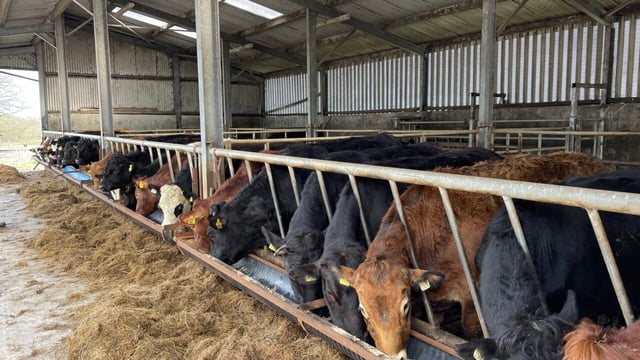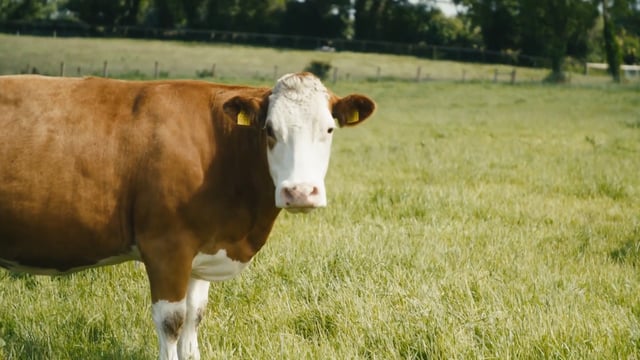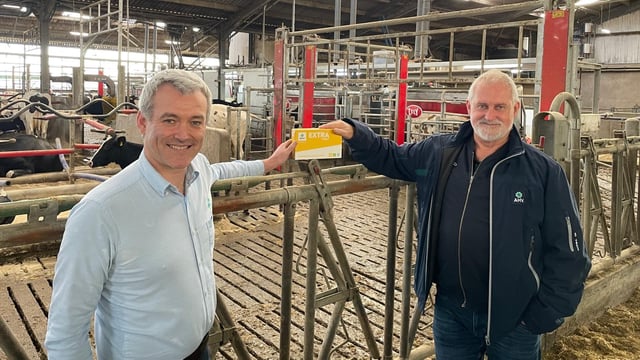Aim to complete one or two more milk recordings to aid drying off
While completing two milk recordings in autumn is the target, it is not always possible and so at least one milk recording should be carried out to aid in drying off and culling decisions.
We have reached the final few months of the lactation and as the wet weather continues, it will not be long until cows are housed full-time and drying off begins on the farm.
However, there is still plenty of milk solids to be delivered from now until dry off, as milk at this time of the year is of very high value with lower litres but higher butterfat and protein percentages, which can be observed from the data below.
ICBF data
The latest data from the Irish Cattle Breeding Federation (ICBF) shows that 1,132,523 cows have been recorded so far in 2025, which is 1% ahead of the same period in 2024, where some 1,121,508 cows had been recorded.
Based on the data, 9,087 herds have completed a milk recording as of October 3, 2025.
The number of herds that have recorded from September 23-October 3 was 966, which consisted of 102,825 cows' milk recorded, with the average herd size at 106 cows.
Average milk yield of these herds that milk recorded was 18.93kg/milk/cow with 4.7% fat and 4.07% protein, which equates to an average of 1.65kg/milk solids/cow/day at the moment.
According to ICBF data, cows peaked on average at 2.11kg/milk solids/cow/day during the week ending April 18.
The average somatic cell count (SCC) for the herds recording in the past 10 days sits at 185,000 cells/ml.
As the year begins to close in, farmers need to start making decisions around culling as the focus should be building covers for next spring and keeping grass in the diet and poor performing cows or empty cows might be hindering this.
Cull cows
Cull cow prices are extremely high at the moment with a shortage going through the marts and factories, which means demand is driving high prices and so farmers should avail of these prices to drive performance for the rest of the year.
Farms must consider the impact of their culling strategy on their nitrates banding. In order to stay within regulatory limits for total organic N, culling cows earlier in the year next year may be necessary.
Dairy cows that dry off or become culls will still be considered in determining the herd’s average milk yield/cow. These cows will also remain at the herd’s respective dairy cow band (80/92/106 kg N per cow) until they leave that herd.
If cull cows are kept on the farm and dried off, their excretion rate obviously remains the same, regardless of lactation, but this will potentially lower the milk yield/cow and potentially bring some farmers to a lower band or keep them in their original band.
Farmers who are borderline in a milk band for nitrates (4,500 or 6,500 milk kgs) should consult their farm adviser on how best to manage/monitor the sale of culls.
Milk recording
The main aim of milk recording at this time of the year is to pick out cows that may be suitable for selective dry cow therapy (SDCT) and identify the cows that will need antibiotic treatment.
If possible, farmers should try and book a recording now and another one for three to four weeks before planned start of drying off.
A milk recording within 30 days of drying off is essential to provide your vet with individual cow information to make sure the cows are prescribed properly.
This along with clinical mastitis history and milk sampling will make sure that the rights cows are picked out for SDCT and will minimise the risk of infection.
Any cows that have been identified as infected should be considered for removal if they are unlikely to be cured with antibiotic treatment.
By removing these problem cows, you will reduce the spread of infection to the healthy cows in the herd, and the need for recurrent antibiotic treatments.
None of these decisions can be made without the aid of a milk recording, so it is crucial that you start organising your last few recordings to ensure that decisions that are made at drying off are data-driven and there is no cases of mastitis or high SCC as a result of poor drying off.





